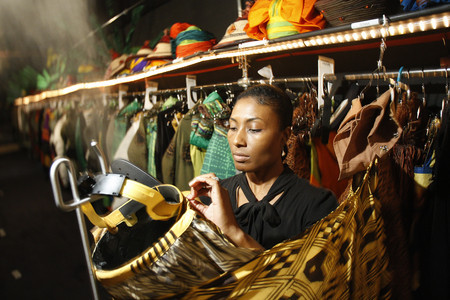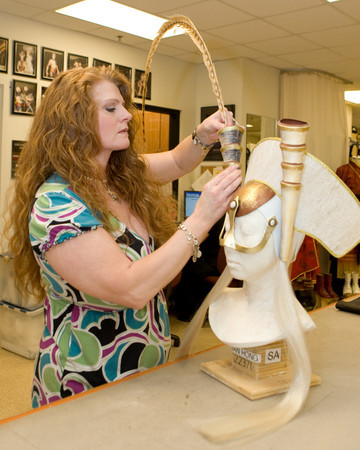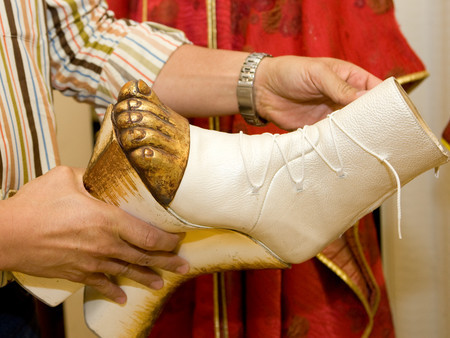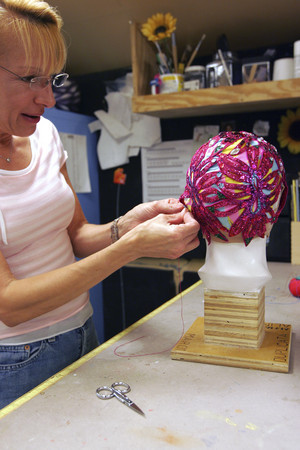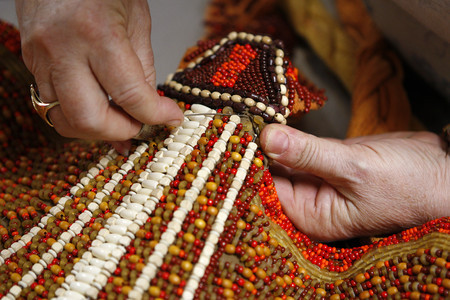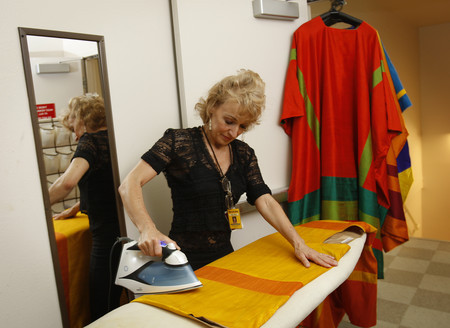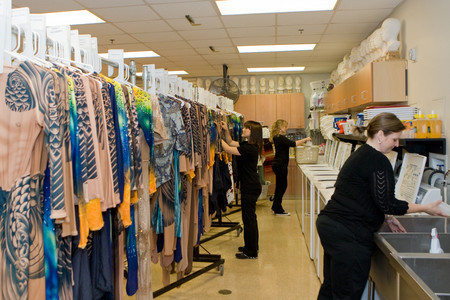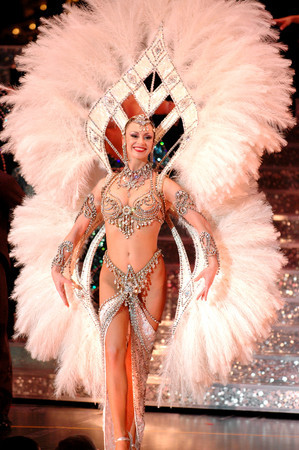Demanding, behind-the-scenes work of costume crews adds to aesthetics of Strip shows
Next time you see one of those extravagant production shows on the Strip, take a moment from all of your oohing and aahing to consider this:
Who does all the laundry? And, come to think of it, whose task is it to do the sewing, the darning, the dyeing of everything from the most basic undergarment to the flashiest headdress?
Those tasks fall to the shows' wardrobe and costume crews, who work daily to ensure that every costume audiences see looks as good today as it did on opening night.
Despite the high-profile results wardrobe crews provide -- would any show on the Strip be quite as spectacular otherwise? -- theirs is a theatrical specialty audiences take for granted.
"It's very hard, I think, for people to think beyond the glamour and see what's going on in the background to put everything together," concedes Marios Ignadiou, assistant head of the costume shop at "Jubilee!"
The near-herculean task of keeping a Strip show sartorially perfect begins when costume designers and directors determine the aesthetic imperatives of each piece of clothing.
"The aesthetics are always uppermost in your mind, because that's what the audience sees," says Mary Nemecek Peterson, associate costume designer for "The Lion King."
As those design concepts are translated into real garments, designers also must consider the practical demands of nightly performances.
Speed, for instance. At "The Lion King," 16 dressers help performers change costumes during the show and "some of our changes are down to two minutes," says Joel Miller, the show's head of wardrobe.
Zippers, rather than Velcro fastenings or buttons, are the costume designer's quick-change friend, Peterson notes. Or, the design of a garment might be altered radically -- for example, making a "suit" that consists of a shirt, trousers and belt fashioned into a one-piece jumpsuit and fastened by a hidden zipper in back.
"Now, you'd never think of wearing that suit to your cousin's wedding, but maybe the director might have said, 'That's going to be a 30-second change,' " Peterson says. "So if it takes more than 30 seconds, I haven't done my job."
Costumes at the Strip's major shows also are made from scratch, often in large part by hand, using surprisingly old-fashioned techniques. Peterson notes that costumes for "The Lion King" were crafted by anywhere from a half-dozen to a dozen costume shops that employ specialists in skills that include dyeing, beading and shoemaking.
"The wonderful thing about Broadway-level theater and even regional theater is that we have a group of craftspeople and artisans doing things that are almost lost from the world," Peterson says.
Costumes in the Strip's major shows also are crafted to precisely fit each of the performers who will wear them. Scott Clish, assistant head of wardrobe for "O," notes that more than 170 measurements are taken for each of that show's performers.
That's true even for performers who "may appear in a group of maybe 10 or 15 people who are wearing the same identical costume," he adds. "Their costumes are unique to them."
To maintain costumes and make the daily adjustments and repairs they require, each show employs wardrobe and costume staffs who, collectively, work nearly around the clock.
The challenges they face are hinted at by the numbers: About 84 performers in "O" who, Clish says, wear more than 4,400 costumes and costume pieces; 55 female dancers and 27 male performers in "Jubilee!" who, Ignadiou says, each have seven to 10 costumes; about 45 performers in "The Lion King," Miller says, each of whom has one to six costume changes a night; and about 83 artists in "Ka," who, together, account for about 1,500 pieces, says Ruben Permel, the show's former head of wardrobe who this week moves to Cirque du Soleil's new show at CityCenter.
And there's this: Clish's staff does 50 loads of laundry each day.
Permel says his staff of 25 to 30 people works from 7 a.m. to midnight, beginning with laundry after each show, then progressing in shifts throughout the day for such maintenance chores as sewing and repairs, and then taking care of clothes-related emergencies that may crop up during each performance.
At "O," 35 to 40 pieces will come in on a typical day for small tears or more significant repairs, Clish says.
Wardrobe crews also deal with such specialized materials as feathers, beads and sequins at "Jubilee!"
Feathers, for example, must be stored out of the light -- to avoid fading, Ignadiou says -- "and we do maintain the feathers by keeping them fluffy with a hair dryer."
"There are also a lot of (costumes with) sequins, which are very hard to maintain, because you can't just send them out to the dry cleaners," Ignadiou adds.
But, Ignadiou notes, "this gives me an amazing opportunity to work on this level of costume. To me, these costumes are more like sculptures."
Permel of "Ka" agrees. "One big thing we kind of pride ourselves on at Cirque du Soleil is, we make one-of-a-kind pieces of art that people wear."
Another thing that seldom, if ever, crosses a layman's mind is that wardrobe must account for safety, too. Consider, Permel says, how a loose hem can catch a high heel and cause a dancer to take a tumble, or how a broken or misaligned headdress can throw a showgirl off-balance and cause a potentially serious fall.
A wardrobe crew's mission, Ignadiou says, is to ensure that the costumes used in each show "stay true to the sketches and the look" devised by the director and costume designer.
Sometimes, that even means turning down performers' requests for a tuck here or a letting-out there.
"We have to explain to the performer that, no, we don't do certain alterations because it's not what the designer's intent was," Miller says. "We have to say: 'No, that's the way it's supposed to fit. It's not supposed to fit like a leotard because it's a costume,' unless it is a leotard. And sometimes, even those don't fit like a leotard."
And always, Permel says, "we want to make every night look like opening night."
Contact reporter John Przybys at jprzybys@reviewjournal.com or 702-383-0280.
By The Numbers
There are about 84 performers in "O" who wear more than 4,400 costumes and costume pieces.
The 55 female dancers and 27 male performers in "Jubilee!" each have seven to 10 costumes.
"The Lion King's" 45 performers each have one to six costume changes a night.
About 83 artists in "Ka" account for about 1,500 pieces.

